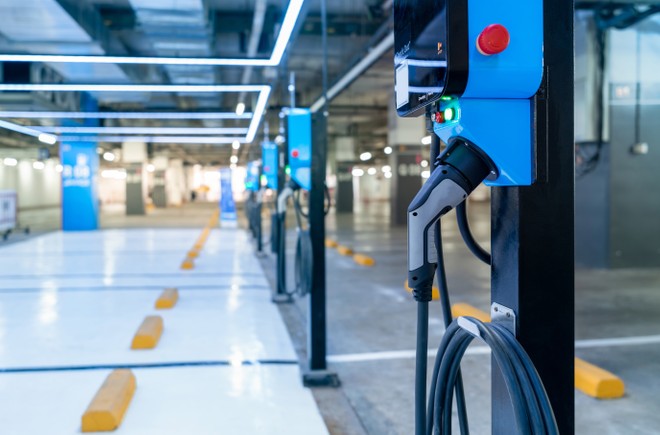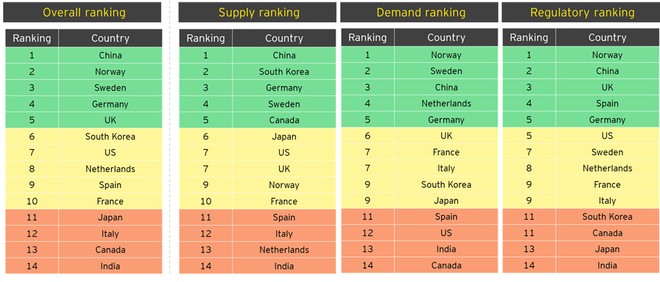
The electrification of the world of transport is; a very hot topic on which there is a lot of discussion. Relating to Italy we have talked many times about problems, people's doubts, incentives, infrastructure progress and much more. But how are we really placed today, even in comparison with other countries? What are the things that are good and what are not? To try to take a picture of the development of mobility; electric in Italy, the new EY survey called EV (Electric Vehicle) Country Readiness Index .
CHINA AND NORWAY IN TOP PLACES
The study classifies the 14 major automotive markets in the world in the field of mobility; electricity taking into consideration three factors: the market supply, the demand from consumers and the regulations in force in the countries examined.
The objective is; to provide an exhaustive overview for each country of the actual maturity; and readiness with respect to mobility; electric.
The data for the first 6 months of the year confirm an already trend; detected in the past and this is; that China takes first place of this particular ranking. This country, the study highlights, & quot; maintains the first position with regard to the progress made in terms of electric vehicles where, both at the manufacturing and infrastructural level, it firmly consolidates its leadership also supported by an internal market in which over 51% of consumers interviewed & egrave; intending to buy an electric vehicle as the next car & quot ;.
In second place we find Norway . Given, even this, which is not surprising given that this country, in Europe, is; always the most conducive to the development of mobility; electric. Followed by Sweden, Germany and the United Kingdom.
NOT WELL ITALY
And where does Italy fit in this ranking drawn up by EY? It is in twelfth place , just ahead of Canada and India. Giovanni Passalacqua , on this result, explains:
The EY survey photographs a country that, despite the challenges it is facing, supports the development of e-mobility thanks to a series of initiatives recently undertaken and can; count on the commitment of the entire sector to respond to the needs of the consumer. According to our survey, only for 24% of Italians the difficulty; linked to the charging of an electric vehicle affects the purchase. A fact that & egrave; more low compared to other countries. However, expensive energy and inflationary pressure could slow down the development of the market. To support and accelerate the development of the sector in the medium-long term it will be; regulatory simplification is fundamental, as well as making public investment incentives and interventions converge with existing and future industrial initiatives in the area.
Going into the detail of the Italian market, with respect to the infrastructures and the national production system, where Italy is suffering the worst scoring second only to India and the Netherlands, there is a delay in production both as regards l & rsquo; induced and both for the production of electric vehicles (with only one factory currently active and two gigafactories under construction).

In fact, according to the study, it is estimated that in the period 2022-2026, against a share of 66% of electric vehicles that will be launched on the Italian market, only 18% of these will come produced on the national territory.
Other factors penalizing the scoring obtained in this driver are the energy balance which sees about 15% of electricity imports and a scarce presence of & ldquo; fast-DC & rdquo; columns. A positive figure, apparently in contrast with what is often highlighted in relation to recharging points, & egrave; the Italian scoring relating to the number of electric vehicles compared to the charging points which is; in line if not higher than the recommended ratio of 10 vehicles per charging point (with a prevalent share of low-power AC points).
Looking on the demand side , Italy ranks seventh. 45% of the interviewees answered & quot; yes & quot; about the propensity to purchase an electric vehicle. However, the problem of costs emerges since the offer is; full of premium templates.
The trend is; also confirmed by the sales figures of the last few months where segment A and B cars dominate to the detriment of the premium segments with a direct impact therefore on the overall share of sales of electric vehicles BEV and PHEV which in 2021 will be; stopped at around 9%.
According to the study, Italy is, on the other hand, aligned with the other countries as regards the system of incentives to purchase , the commitments relating to the banning of combustion engines (2035) and the net zero target for 2050.
For & ograve; some areas of improvement in the legislation aimed at favoring in the first place the streamlining of procedures, but also by proposing non-monetary incentives as already; widely implemented by countries such as Norway, China and Germany.
5G without compromise? Oppo Reno 4 Z, on offer today from Bpm power for 219 euros or from eBay for 266 euros .

